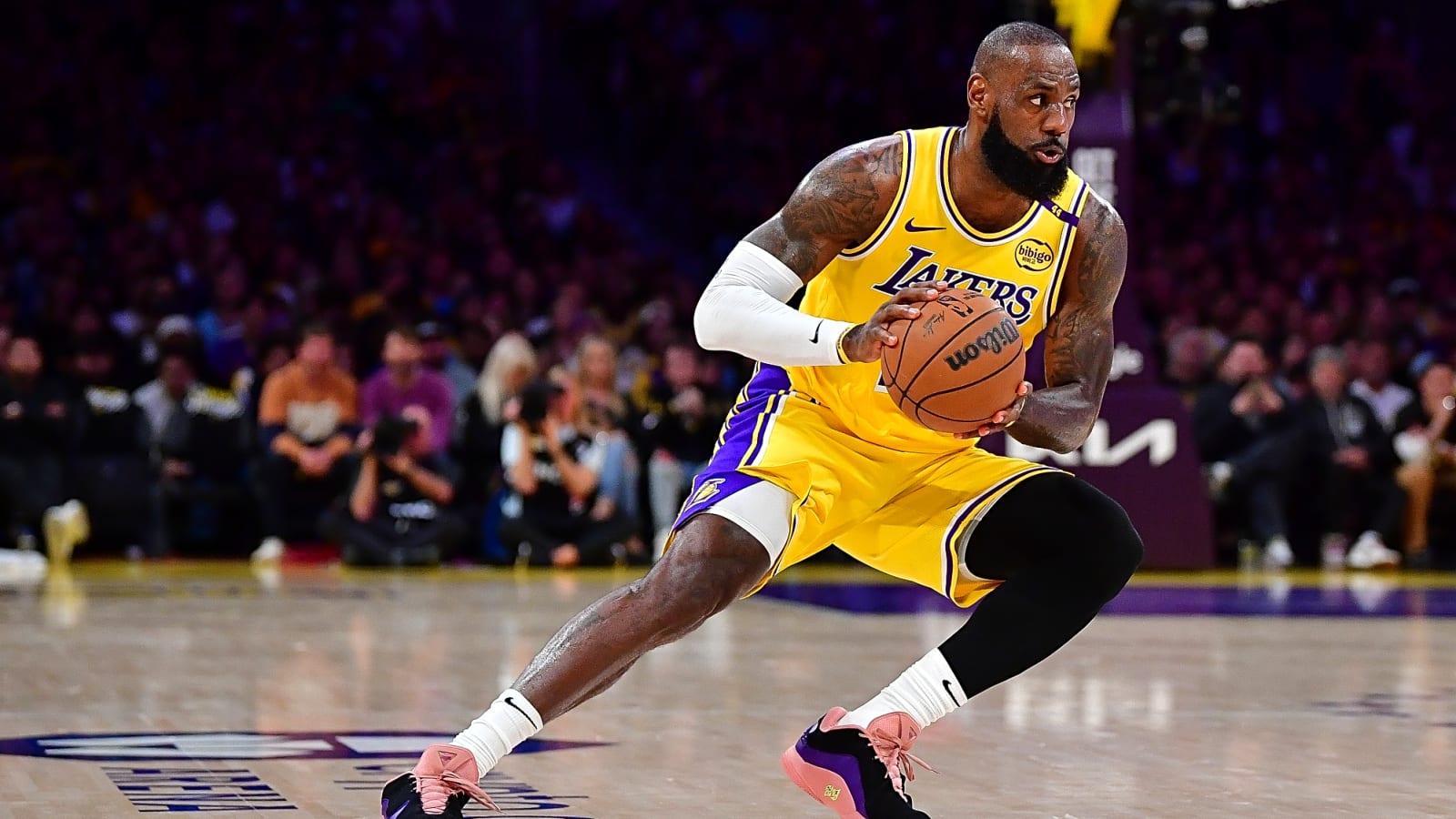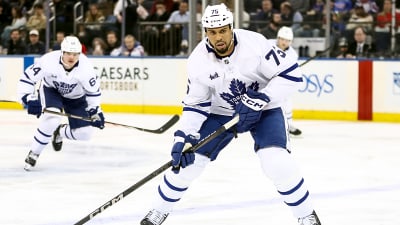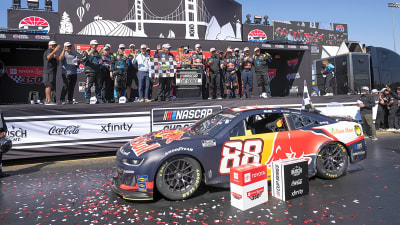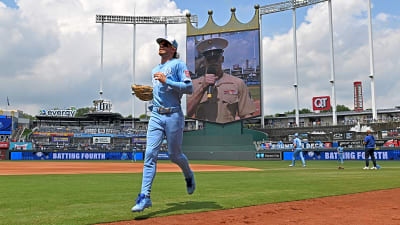
Fast breaks are more than flashy highlights; they're game-deciders. And some players didn’t just run; they completely ruled the open court. Magic Johnson made fast breaks an art form, waltzing downcourt with no-look dimes that turned transition into Showtime with the Los Angeles Lakers.
Allen Iverson shattered ankles, exploding full-speed with “jet-engine legs” that made defenders pray for the whistle. Then came LeBron James and Giannis Antetokounmpo, giants who sprint faster than most guards, punish every broken defense, and scatter rim defenders instantly. But these aren't the only ones.
Using a mix of sheer size, speed, court vision, and creativity, each rewrote full‑court play into an unstoppable weapon. Let's rank the 30 greatest fast-break artists into five tiers to see who ranks above the rest.
Tier 1
LeBron James, Magic Johnson, Giannis Antetokounmpo
LeBron James blends freakish size, speed, and court vision. He dominated it, grabbing rebounds, igniting the break with horsepower and then finishing with power or precision, making it nearly impossible for defenses to recover. His versatility in transition, pushing, passing, threatening, and powering through lets him dictate the pace, creating mismatches and highlight-reel chaos even in his late 30s and early 40s.
Magic Johnson was the architect of “Showtime”, a transition offense built on visionary no-look passes, alley-oops, and point-forward dominance. At 6'9", he redefined fast-break guard play, posting an unmatched 11.2 APG career average and frequently turning defense into offense with flair. Magic was must-see TV because of his ability on the break.
Giannis Antetokounmpo brings a modern, unstoppable blend of size and acceleration; his full-court charges resemble a freight train, bulldozing defenses and finishing with thunderous dunks. Some analysts even label him the greatest fast-break threat ever, given his efficiency in yard-line transition scoring, and we find that argument very fair. Regardless, he's in Tier 1 with LeBron and Magic.
Tier 2
Russell Westbrook, Jason Kidd, Michael Jordan, Allen Iverson
Russell Westbrook holds the single-season record for fast-break points (8.2 PPG in 2014-15), a testament to his raw pace and relentless aggression on the break. He’d push every possession like a track race, and it was incredibly fun to watch during his prime.
Jason Kidd was the consummate transition facilitator; his precision outlet passing and court sense ignited countless break opportunities, making the Nets and Suns some of the most efficient early-offense teams of the 2000s. Kidd's fast-break prowess was behind the Nets' making the Finals on two occasions.
Michael Jordan turned breaks into scoring showcases with his explosive first step and mid-air control. When he got out ahead of the defense, it was near-certain he’d either finish or draw awe-struck cheers. Anytime there is a category that comes to offense, the GOAT will rank towards the top.
Allen Iverson exploded through defenses with jet-engine legs. His low center of gravity and fearless downhill attacks made him possibly the most electrifying guard in transition, particularly in his prime. Four scoring titles came mainly as a result of the guard's quickness in the open court.
Tier 3
Derrick Rose, Dwyane Wade, Steve Nash, John Wall, Kobe Bryant, Oscar Robertson
Derrick Rose in 2010-11 was a blur in transition; his 4.5-second bursts turned defensive boards into near-automatic finishing, explosive enough to consistently leave opposing backcourts scrambling.
Dwyane Wade melded speed, craft, and finesse; his signature one-two step was a transition nightmare, consistently drawing fouls or closing with crafty finishes at the rim. We can't forget how dominant "Flash" was during his prime with the Heat.
Steve Nash courted pace with precision; his playmaking in transition wasn’t about speed but timing, turning early offense into rhythm and open shots for teammates. Nash was great in the half-court as well, but his transition game probably got him the two MVP awards.
John Wall, in his prime, was a speedster who did everything, rebounds, outlet passes, coast-to-coast finishes, and embodied pure transition tempo. One of the fastest players of all time, Wall is easily in Tier 3.
Kobe Bryant may not have led the team in fast-break stats, but he struck with devastating efficiency when he got out. His competitive gear turned break opportunities into hard-earned buckets. He also put a couple of players on iconic posters as well.
Oscar Robertson was basketball’s prototype triple-double man; his size, vision, and pace set the stage for modern transition play and were a mismatch machine before the fast-break was even fully tracked.
Tier 4
Tracy McGrady, Manu Ginobili, Larry Bird, Scottie Pippen, Charles Barkley, Tony Parker, Stephen Curry, Wilt Chamberlain
T-Mac was born for highlight-reel fast breaks. He'd explode down the lane, spin off slower defenders, and either dunk thunderously or hit that silky pull-up; his bursts were “almost violently” sudden and deadly effective. McGrady's self alley-oops on the break were a thing of beauty as well.
The stealthy architect of the transition Euro-step, Manu Ginobili, would burst ahead, break ankles in mid-air, and finish with crafty floaters or off-hand tags, his creativity and timing made defenses look helpless as he sliced through seams.
Not famed for sprinting speed, Larry Bird's transition game relied on cerebral timing. His sharp, catch-and-fire passes in early offense often turned routine stops into immediate scoring chances, making his court IQ just as dangerous as any fast break athlete.
The ultimate wing-driver in transition, Scottie Pippen used length, speed, and defensive anticipation to run lanes off steals or rebounds, his layups and open-court reads anchored some of Jordan's most lethal breakouts.
"The Round Mound of Rebound", Charles Barkley, was a bulldozer on the break, snagging offensive boards and crashing the paint with brute strength. His tornado dribble and step-in layups made him a consistent, physical threat ahead of the pack.
With a lightning-fast step, Tony Parker would puncture defenses in the blink of an eye. His transition scoring was defined not by raw speed but by pinpoint timing; he’d slip free and hit floaters or dishes before defenders blinked.
Transition became even deadlier with Stephen Curry’s micro-bursts and ball-handling wizardry. Not the fastest, but his shift-in-speed seconds into a fast break made early offense chaos for opponents, often pulling up or feeding streaking teammates.
Even when early breaks weren’t tracked, Wilt Chamberlain's trailing sprints and alley-oop finishes were unstoppable. His pre-stats dominance in transition was built on size, strength, and unmatched athleticism; he owned the offensive glass and immediate put-backs.
Tier 5
Clyde Drexler, Chris Paul, Chauncey Billups, Gary Payton, Rajon Rondo, Penny Hardaway, Kevin Durant, Julius Erving, Shawn Kemp
Clyde “The Glide” Drexler earned his nickname, and not just for dunking. He routinely grabbed rebounds or steals, then coasted downcourt with ease. His fast-break playmaking? Legendary. A Blazers/Rockets stalwart in 2-on-1s, using full-speed pocket passes and dunks to dominate.
Chris Paul didn't look like a breakaway threat, but he played chess in transition, probing defenses, pushing just until lanes opened, then either finishing or dishing with surgical accuracy. He made every break feel like a question whose answer was always “he’ll find the open man.”
Mr. Big Shot brought calm and foresight to the transition. His late-game break decisions, when to pull up or pass, were precise, efficient, and clutch, turning potential fritters into composed, intelligent buckets.
Gary Payton combined defensive intensity with sprint-like offense. He’d force turnovers with those same hands, then sprint the break, finishing aggressively or finding cutters on the fly; his competitiveness set the tone.
Transition Rajon Rondo meant vision first, long rebounds, quick hands, and threading passes ahead of the pack. His IQ unlocked break offense not by speed but by timing, making unnoticed hustles turn into buckets.
A smooth, 6'7" point forward in transition, Penny glided downcourt, finishing with savvy floaters or whipping perfect dishes. His ease in stride and feel for space made him a uniquely graceful transition threat.
Kevin Durant's quiet bursts in transition, a few steps, pull-up, back down, made him a lethal threat. Even without elite speed, his pull-up jumper became the transition weapon: unstoppable, efficient, and delivered with ice in his veins.
Julius Erving ushered in the high-flying break, those soaring coast-to-coast slams and awe-inspiring finishes weren’t just spectacles, they redefined how fast breaks looked and felt. His aerial artistry in motion stays legendary.
Pure dunk energy on wheels. Kemp’s transition jams, high-speed, thunderous, punched defenses in the mouth, turning stops into momentum-shifting highlight explosions that echoed through arenas.
More must-reads:
- Lakers supporting Bronny James with veteran Summer League roster
- Cooper Flagg showed glimpse of abilities in NBA Summer League debut
- The 'Most points in a game by NBA team in 2024-25' quiz
Breaking News
Trending News
Customize Your Newsletter
 +
+
Get the latest news and rumors, customized to your favorite sports and teams. Emailed daily. Always free!








